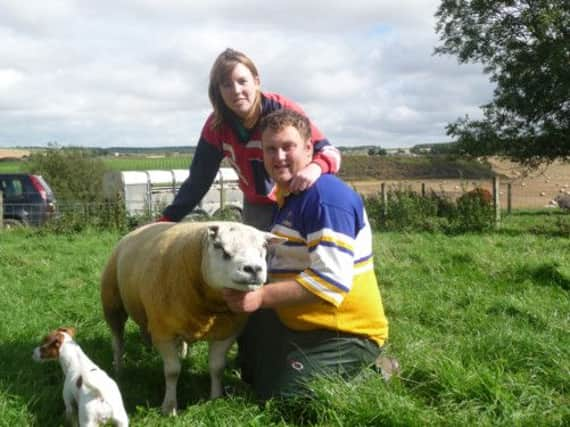Record numbers of Scottish women turn to farming


Attracted by the prospect of a better work-life balance and the chance to run their own business, thousands are shunning conventional nine-to-five jobs for the joys of breeding cattle or growing crops.
New figures show a surge in the number of women in agriculture over the past decade – almost threefold in some areas – compared to a sharp drop in the number of male farmers.
Advertisement
Hide AdAdvertisement
Hide AdAnd while men still vastly outnumber their female counterparts in farming, the new generation of women is threatening to change the face of the industry forever.
Becky Miles, extension officer with DairyCo, a not-for-profit organisation that assists dairy farmers, said women are now “an integral part” of the workforce.
She said: “They have a range of talents and, since the increased use of mechanisation and technological breakthroughs, brawn is no longer a deciding influence on who farms the land. Dairy farming, for instance, is a hi-tech business which requires a range of skills and there are many opportunities.”
Across Britain, the number of men starting out in the industry dropped by 5,000 last year while the number of women taking to agriculture rose by 6,000. Figures released by the Scottish Government show a similar pattern north of the border, with almost 5,900 women working on farms in Scotland, an overall rise of 20 per cent since 2002.
The biggest rise has been in casual hired staff, from 898 in 2002 to 2,139 last year, while there has also been a 29 per cent increase in female business partners, from 533 in 2002 to 692 last year.
And while the number of men working full-time on farms fell from 13,716 in 2002 to 11,866 in 2012, there was a rise in women from 1,413 to 1,621 during the same period.
Among the new generation of farmers is 30-year-old Kirsten Williams, who, last month, took over a 100-acre pedigree sheep farm in Huntly, Aberdeenshire, with her husband, Ross.
Her day begins at 6:30am when she feeds the sheep and lambs before doing the rounds on the farm and then heading off to her other job as an agricultural consultant.
Advertisement
Hide AdAdvertisement
Hide AdShe said: “In the past, farming was such a male occupation but that’s not how it’s seen now. I love the fact I am outside a lot of the time and I can work with the animals.
“For many women, it also gives them some flexibility in their family lives.”
Colleges specialising in agricultural qualifications have experienced a notable rise in interest from female students, with lecturers saying some courses are now evenly split between men and women.
More than 60 years have passed since the Women’s Land Army was disbanded, having been formed in 1939 to cope with the likelihood of a food shortage with war looming.
By 1944, it had 80,000 female members tending to farms and growing food, with the majority of the “land girls” conscripted from the countryside in the north of England and Scotland.